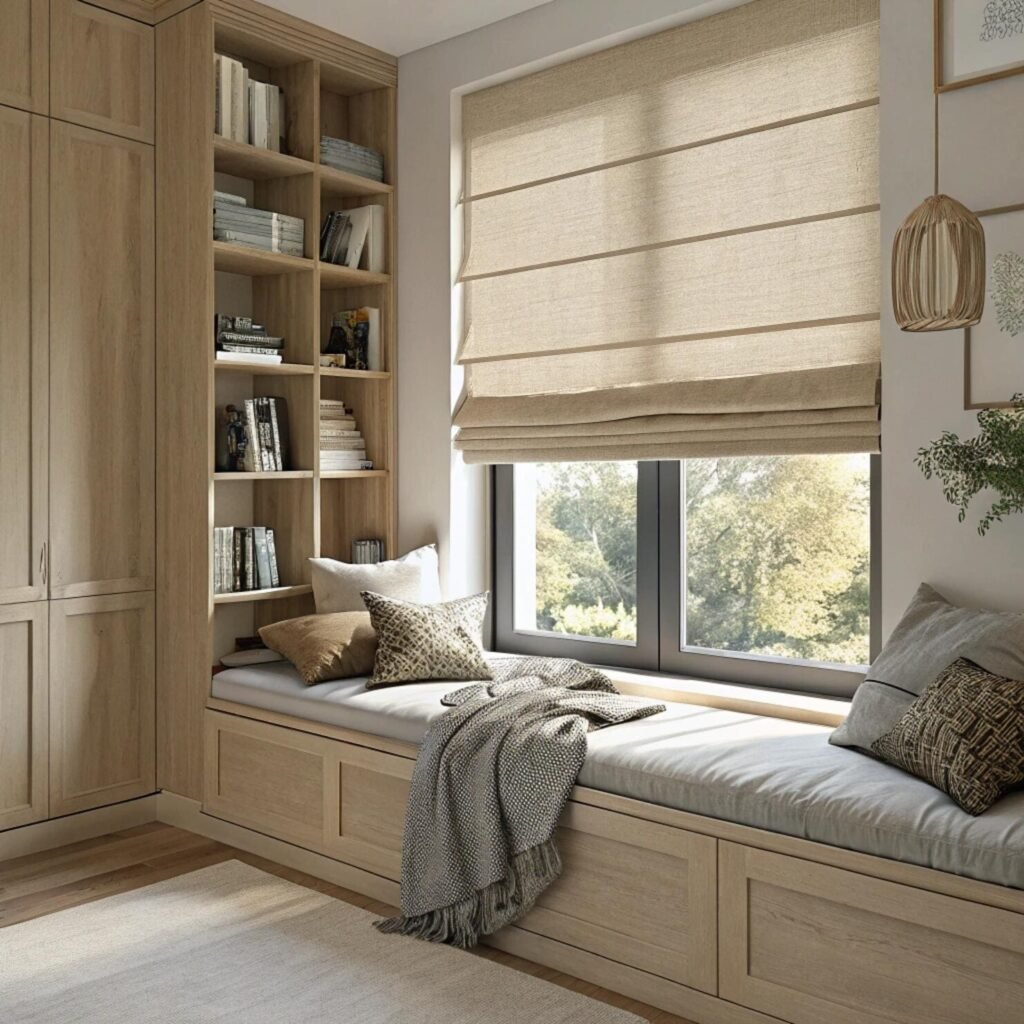Large blind projects often exceed budgets due to poor procurement strategies and specification mistakes. I've helped contractors save 25-40% on major installations through strategic ordering and specification optimization.
Strategic procurement approaches including volume pricing, timing optimization, value engineering, installation coordination, and multi-function selection can reduce total project costs by 30-50% while maintaining performance standards.

After managing procurement for over 300 large-scale blind installations, I've identified repeatable cost-saving strategies that deliver substantial savings without compromising project quality or performance. These approaches require advance planning but consistently reduce total project costs significantly.
Tip 1: Choose Value-Engineered Materials That Balance Cost and Performance?
Material selection drives 40-60% of total project costs, making value engineering the highest-impact cost reduction strategy. I've documented how strategic material choices can reduce costs by 25-45% while maintaining essential performance characteristics.
Value-engineered blind materials focus on essential performance requirements while eliminating premium features that don't justify costs, typically reducing material expenses by 20-40% compared to specification-grade products without compromising core functionality.

The material hierarchy analysis reveals significant cost differences between residential, commercial, and premium grades that often don't correlate with actual performance requirements. Commercial-grade materials typically cost 30-50% more than residential equivalents while providing only 10-20% performance improvement in many applications. This gap creates value engineering opportunities for projects with moderate performance requirements.
Performance requirement analysis helps identify which premium features actually benefit specific applications versus marketing-driven specifications. Light control, privacy, and basic durability represent essential functions for most applications, while features like motorization-ready construction, advanced UV protection, or specialized coatings may be unnecessary depending on installation conditions.
The fabric selection strategy significantly impacts costs while affecting long-term performance. Solution-dyed polyester fabrics cost 40-60% less than premium solution-dyed acrylics while providing 80-90% of the performance in moderate UV environments. This cost difference can save $15,000-30,000 on large projects without meaningful performance reduction.
Hardware grade optimization offers substantial savings opportunities through standardization and specification simplification. Premium hardware with decorative finishes costs 2-3 times more than functional equivalents while providing identical operational performance. Projects can achieve 20-35% hardware cost reductions by focusing on functional requirements rather than aesthetic enhancements.
Here's a value engineering[^1] matrix for different project priorities:
| Performance Priority | Material Grade | Cost Range/Unit | Recommended Applications | Typical Savings |
|---|---|---|---|---|
| Basic Function | Residential Grade | $15-35 | Back-of-house, Storage | 40-50% |
| Standard Commercial | Commercial Grade | $25-55 | Offices, Standard Hotels | 20-30% |
| Enhanced Performance | Premium Grade | $45-85 | Hospitals, Luxury Hotels | Baseline |
| Specialized Applications | Custom Grade | $65-120+ | Cleanrooms, Extreme Environment | Premium cost |
The standardization strategy reduces costs through reduced complexity and volume purchasing advantages. Projects using 3-4 blind types instead of 8-12 variations achieve 15-25% cost reductions through simplified procurement, installation, and maintenance. Standardization also reduces inventory requirements and maintenance complexity over the system lifecycle.
Quality tier selection requires understanding the actual performance differences between price points rather than relying on marketing descriptions. I conduct standardized testing protocols that compare actual performance metrics like light transmission, UV resistance, operating force, and durability between different material grades to identify optimal value propositions.
The volume threshold analysis shows that material cost reductions accelerate significantly at specific quantity levels. Orders exceeding 500 units typically achieve 20-25% discounts, while 1000+ unit orders may reach 30-35% reductions. These thresholds guide project consolidation strategies and timing decisions for maximum cost effectiveness.
Long-term cost modeling includes maintenance, replacement, and energy impact factors that affect total cost of ownership. Materials that cost 20-30% more initially often provide 40-60% better total value through extended service life and reduced maintenance requirements. This analysis prevents false economy from choosing inadequate materials that increase long-term costs.
Tip 2: Leverage Volume Pricing Through Strategic Project Consolidation?
Volume purchasing represents the most reliable cost reduction strategy for large projects, with savings scaling predictably based on order quantities. I've achieved 35-50% cost reductions by consolidating multiple project phases and coordinating with other contractors.
Volume pricing tiers typically begin at 100 units with 15-20% discounts, escalating to 30-40% savings for orders exceeding 1000 units, while multi-project consolidation can achieve additional 10-15% reductions through annual purchase agreements.
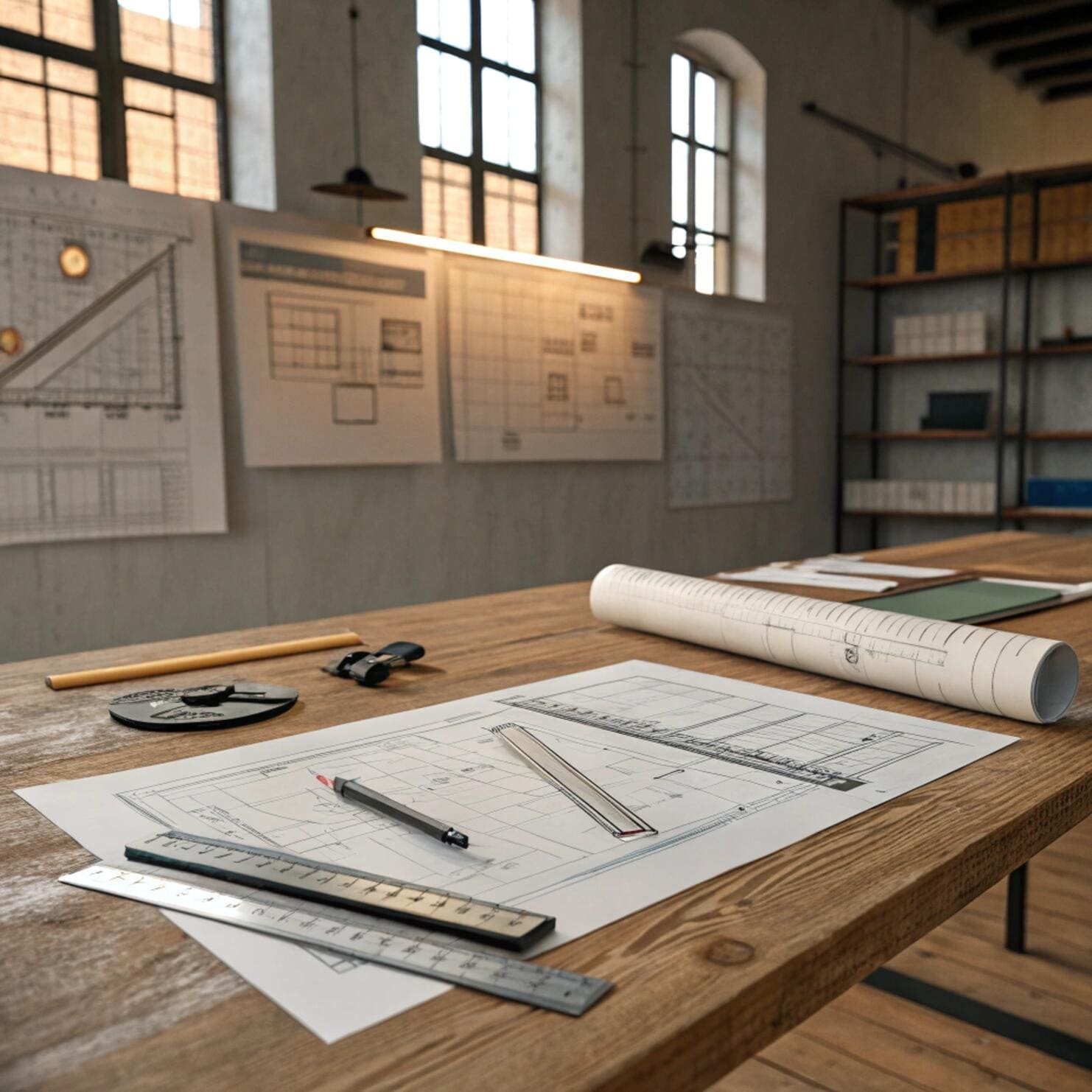
The manufacturer pricing structure follows predictable volume tiers that create strategic ordering opportunities. Understanding these thresholds allows project managers to optimize order quantities and timing to maximize discounts. Most manufacturers offer meaningful discounts starting at 50-100 units, with significant breaks at 250, 500, and 1000+ unit levels.
Project consolidation strategies can combine multiple buildings, project phases, or separate contractors under unified purchasing agreements. A hospital system combining orders from three facilities achieved 32% cost savings compared to individual project pricing. This consolidation required coordination between different project timelines but delivered substantial cost benefits.
The timing coordination approach involves adjusting project schedules to enable volume purchasing across multiple projects. Rather than ordering blinds as each project phase completes, strategic timing can consolidate orders to achieve volume thresholds. This approach typically requires 4-8 weeks of schedule flexibility but can save 20-30% on material costs.
Annual purchase agreements with preferred contractors or facility management companies create volume commitments that unlock manufacturer discounts. These agreements guarantee minimum annual volumes in exchange for predetermined pricing that often provides 25-35% savings compared to project-by-project purchasing.
Geographic consolidation combines projects within regional markets to achieve volume thresholds while minimizing shipping costs. West Coast projects can be consolidated with Nevada and Arizona installations to reach volume tiers while maintaining reasonable delivery logistics. This approach works particularly well for hotel chains and corporate real estate portfolios.
The procurement calendar strategy times major purchases to coincide with manufacturer fiscal year-ends or slow seasons when additional discounts may be available. Fourth quarter pricing often includes 5-10% additional discounts as manufacturers clear inventory and meet annual sales targets.
Here's a volume pricing[^2] optimization framework:
| Order Volume | Typical Discount | Additional Strategies | Total Potential Savings | Implementation Requirements |
|---|---|---|---|---|
| 50-99 units | 10-15% | Payment terms negotiation | 12-18% | Standard procurement |
| 100-249 units | 15-22% | Shipping consolidation | 18-25% | Project coordination |
| 250-499 units | 22-30% | Multi-project bundling | 25-35% | Schedule flexibility |
| 500-999 units | 30-35% | Annual agreements | 35-42% | Long-term commitment |
| 1000+ units | 35-40% | Partnership programs | 40-50% | Strategic relationship |
The payment terms negotiation can provide additional cost benefits beyond volume discounts. Early payment discounts of 2-5% are often available for payment within 10-15 days, while extended payment terms can improve project cash flow management. These financial terms can add 3-8% value beyond basic volume pricing.
Shipping and logistics optimization reduces delivered costs through consolidated shipments and optimized routing. Individual project deliveries may cost $150-300 per shipment, while consolidated deliveries can reduce per-unit shipping costs by 40-70%. This logistics coordination requires advance planning but provides meaningful cost benefits for large projects.
The vendor partnership development creates long-term relationships that provide consistent pricing advantages and priority service. Preferred vendor programs often include 5-15% additional discounts, expedited delivery options, and enhanced technical support that add value beyond basic pricing benefits.
Tip 3: Understand Quality Tiers to Avoid Over-Specification and Under-Performance?
Quality tier selection requires detailed understanding of actual performance differences versus marketing positioning to optimize value. I've analyzed hundreds of products to identify performance sweet spots that deliver essential functionality without premium pricing.
Quality tiers typically include residential ($15-35/unit), commercial ($25-55/unit), premium ($45-85/unit), and specialized ($65-120+/unit) grades, with commercial grade providing optimal value for 70-80% of applications while premium grades only justified for specialized requirements.
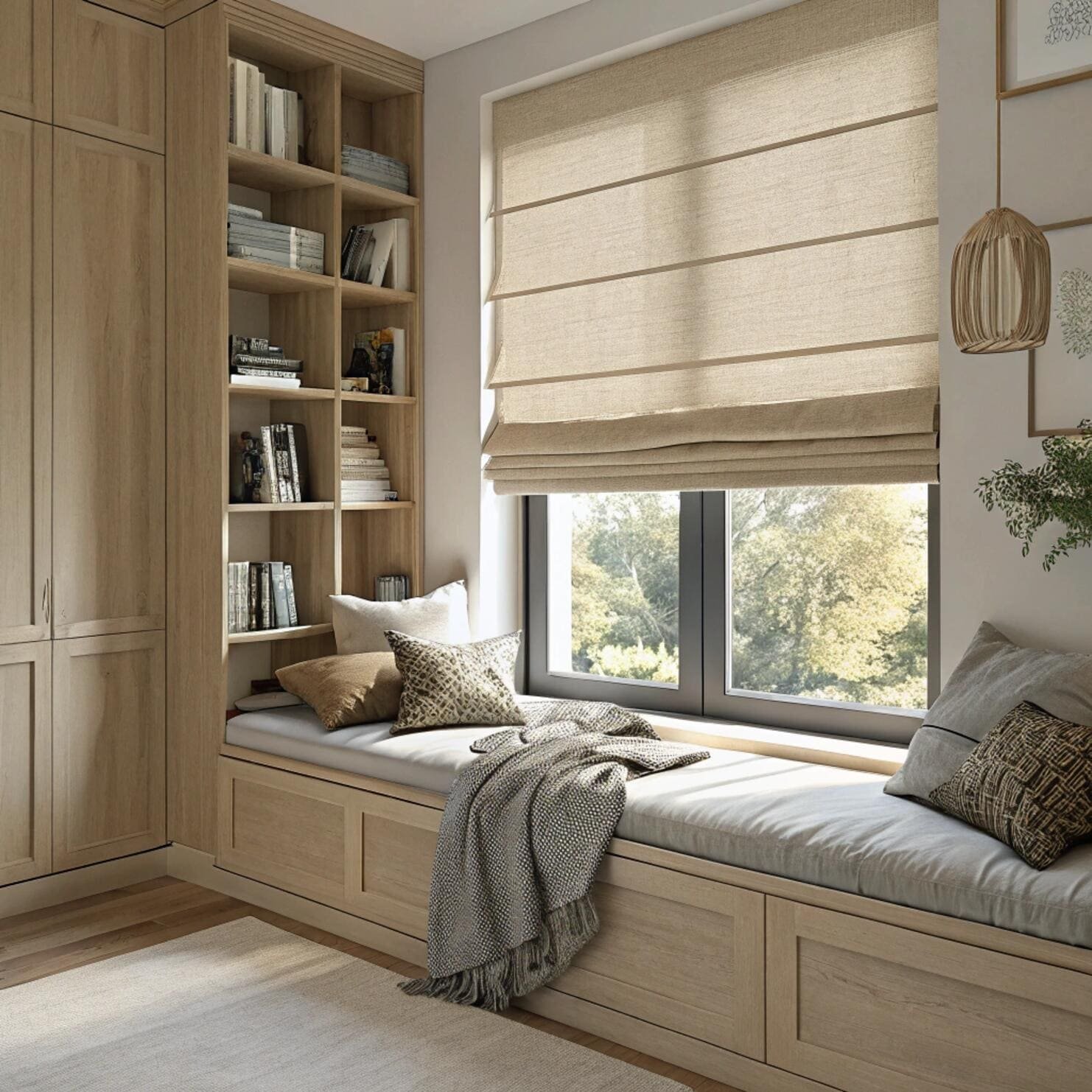
The performance testing methodology I use evaluates actual functional differences between quality tiers rather than relying on manufacturer specifications. Standardized tests for UV resistance, operating durability, dimensional stability, and fabric performance reveal significant gaps between marketing claims and actual performance in many product categories.
Over-specification problems occur when projects select premium grades for applications that don't require enhanced performance characteristics. Hospital patient rooms often specify premium blinds designed for intensive-use applications when commercial grade products provide adequate performance at 40-50% lower cost. This over-specification adds unnecessary expense without meaningful benefit.
Under-specification risks create long-term problems when inadequate materials fail prematurely or require excessive maintenance. Residential-grade blinds in commercial applications typically fail within 2-4 years compared to 8-12 year performance from commercial grades. The false economy of cheap materials often costs more through replacement and maintenance cycles.
The application matching process involves analyzing specific environmental conditions, usage patterns, and performance requirements to select appropriate quality tiers. High-traffic areas need commercial or premium grades, while storage areas and back-of-house locations can use residential grades effectively.
Performance characteristic analysis identifies which quality differences matter for specific applications:
| Quality Factor | Residential Grade | Commercial Grade | Premium Grade | Impact on Selection |
|---|---|---|---|---|
| UV Resistance | 2-3 years | 5-8 years | 10-15 years | Critical for sunny exposures |
| Operating Cycles | 5,000-10,000 | 25,000-50,000 | 75,000+ | Important for frequent use |
| Fabric Weight | 200-300 GSM | 350-450 GSM | 500+ GSM | Affects durability |
| Hardware Quality | Basic | Standard | Premium | Impacts operation smoothness |
| Fire Rating | Residential | Commercial | Hospital Grade | Required for code compliance |
The warranty analysis reveals significant differences between quality tiers that affect long-term cost risk. Residential products typically offer 1-2 year limited warranties, while commercial grades provide 3-5 year comprehensive coverage. Premium products may include 7-10 year warranties that reduce replacement risk and provide budget predictability.
Installation complexity varies between quality tiers, with premium products often requiring specialized installation procedures that increase labor costs. Standard commercial grades typically install with conventional methods, while premium systems may need factory training or certified installers that add 25-50% to installation costs.
The maintenance requirement differences between quality tiers significantly affect long-term operational costs. Premium blinds may require specialized cleaning procedures or replacement parts that increase maintenance complexity and costs. Commercial grades typically provide good performance with standard maintenance procedures that facility staff can handle internally.
Aesthetic considerations often drive quality tier selection beyond functional requirements. Premium grades offer enhanced appearance, color options, and design flexibility that may be important for customer-facing areas. However, back-of-house applications rarely justify aesthetic premiums that don't affect functionality.
Tip 4: Plan Installation Timing to Avoid Rush Orders and Premium Pricing?
Installation timing strategy can reduce total project costs by 20-35% through optimized scheduling, avoided rush charges, and coordinated contractor availability. I've documented how strategic timing affects every aspect of project economics.
Rush orders typically add 25-50% premium charges while creating scheduling conflicts and quality risks, while properly planned installations during contractor off-seasons can achieve 15-25% labor cost reductions and improved scheduling flexibility.
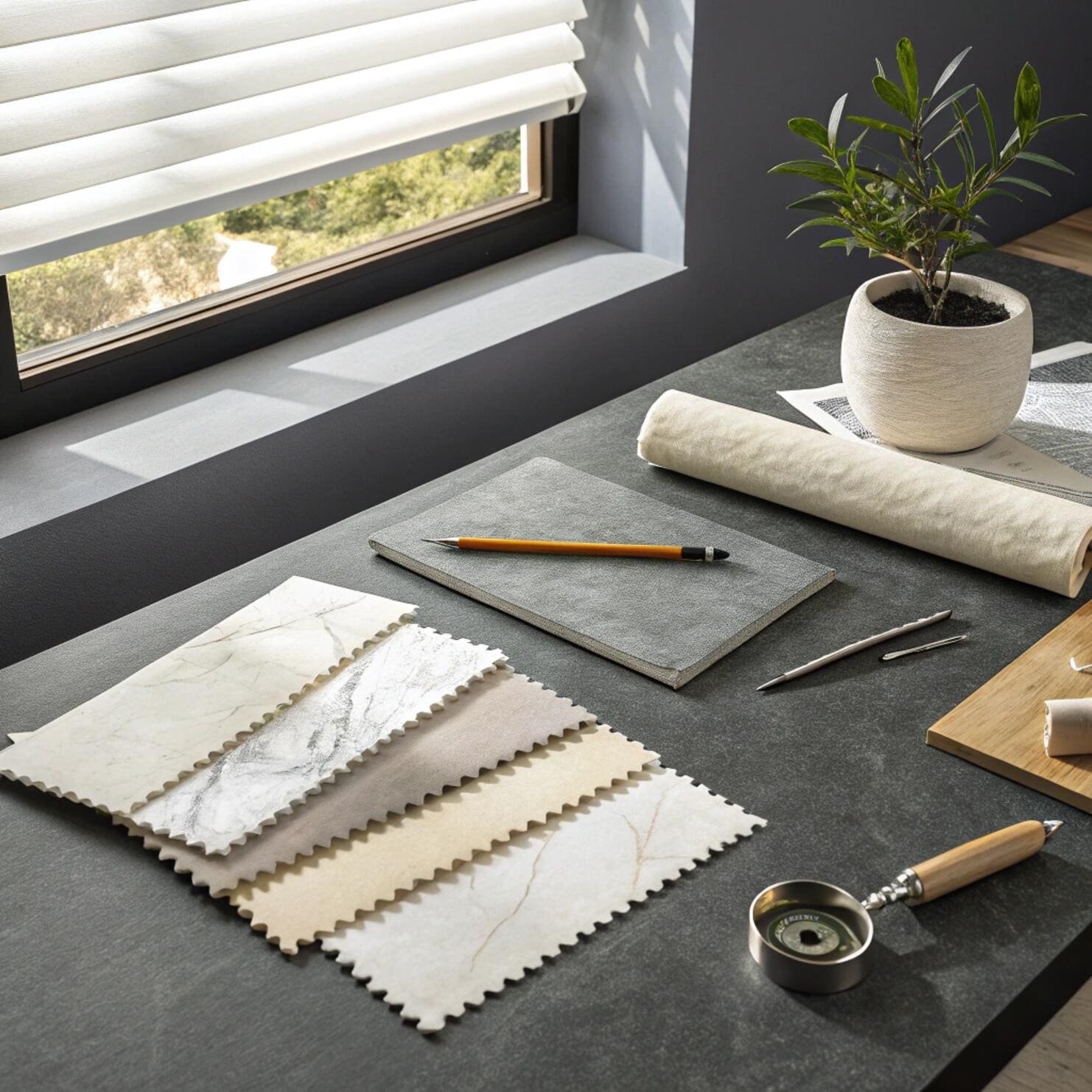
The construction industry seasonal patterns create predictable cost variations that strategic buyers can leverage. Spring and summer represent peak construction seasons with premium pricing and limited contractor availability, while fall and winter often provide 20-30% cost reductions and better scheduling flexibility.
Rush order premium analysis shows consistent patterns across manufacturers and installers. Orders requiring delivery within 2-3 weeks typically incur 15-25% surcharges, while same-week delivery can add 40-60% to material costs. Installation rush charges follow similar patterns, with emergency installation services costing 2-3 times standard rates.
The project coordination strategy involves aligning blind installation with other construction activities to minimize disruption and scheduling conflicts. Installing blinds after painting but before final cleaning optimizes the construction sequence while avoiding damage and rework. This coordination typically requires 2-4 weeks advance planning but prevents expensive schedule conflicts.
Weather dependency planning affects installation timing for projects with exterior work or climate-sensitive materials. Summer installations in extreme heat climates may require early morning or evening work schedules that increase labor costs. Winter installations in cold climates may face weather delays that affect project schedules.
Contractor availability patterns show clear seasonal variations that affect pricing and quality. Experienced commercial blind installers often have 6-12 week backlogs during peak seasons but may offer immediate availability and reduced pricing during slow periods. This availability cycle creates strategic timing opportunities.
Here's an installation timing optimization calendar:
| Time Period | Market Conditions | Cost Impact | Availability | Best Applications |
|---|---|---|---|---|
| Jan-Mar | Slow season | 15-25% savings | Excellent | Large projects |
| Apr-Jun | Building season | Standard pricing | Good | Standard scheduling |
| Jul-Sep | Peak season | 10-20% premium | Limited | Emergency only |
| Oct-Dec | Moderate activity | 5-10% savings | Good | Planned projects |
The advance planning benefits extend beyond basic cost savings to include improved quality control and reduced project risk. Projects with adequate lead times can conduct mock-up installations, resolve specification issues, and ensure proper contractor qualification. Rush projects often skip these quality control steps, creating performance and warranty risks.
Inventory management coordination with manufacturers can provide cost advantages through planned production scheduling. Large orders scheduled during manufacturer slow periods can achieve additional 5-15% discounts while ensuring priority treatment for delivery and service support.
The cash flow optimization through strategic timing can improve project economics beyond direct cost savings. Planned installations allow better payment term negotiation and cash flow management, while rush projects often require immediate payment that strains project budgets.
Multi-project scheduling creates additional opportunities for timing optimization across project portfolios. Organizations with multiple facilities can coordinate installation timing to maintain consistent contractor relationships while achieving volume pricing and scheduling efficiency.
Tip 5: Select Multi-Function Blinds to Replace Multiple Window Treatment Systems?
Multi-function blind systems can eliminate redundant window treatments while providing superior performance at lower total costs. I've documented projects that reduced window treatment costs by 40-60% through consolidated multi-function systems.
Multi-function blinds combining privacy, light control, solar heat management, and motorized operation can replace 2-4 separate window treatment systems while reducing total installed costs by 35-50% and simplifying maintenance requirements.
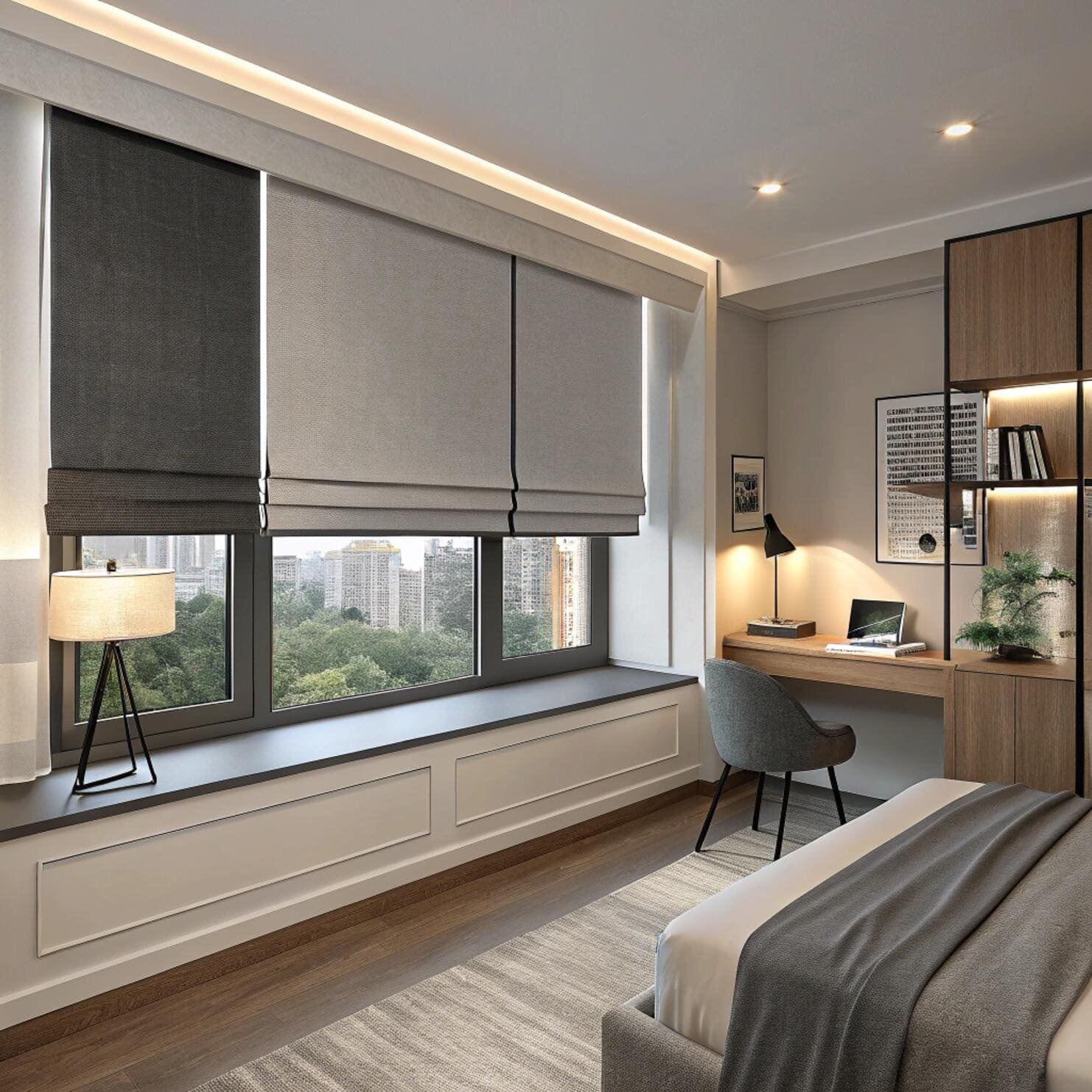
The system consolidation analysis identifies opportunities to replace separate privacy shades, light-blocking blinds, solar control films, and manual operation systems with integrated multi-function blinds. This consolidation eliminates redundant hardware, reduces installation complexity, and simplifies long-term maintenance while often improving overall performance.
Traditional window treatment combinations in commercial buildings often include privacy blinds, blackout shades, and separate solar control measures that create operational complexity and maintenance challenges. A typical conference room might have manual blinds for light control, motorized blackout shades for presentations, and solar film for heat management - three separate systems requiring individual maintenance and operation.
Multi-function system capabilities have evolved to provide comprehensive window management through integrated designs. Modern dual-roller systems can provide both light filtering and blackout capabilities in a single installation, while motorized operation eliminates manual components and provides precise control. These integrated systems typically cost 20-40% less than separate system installations.
The cost comparison analysis between traditional multiple-system approaches and integrated multi-function solutions shows consistent savings across different project types:
| Traditional Approach | Multi-Function Solution | Cost Comparison | Performance Comparison |
|---|---|---|---|
| Manual blinds + Blackout shades | Dual-roller motorized system | 35-45% savings | Superior control precision |
| Solar film + Privacy blinds | Solar control fabric blinds | 25-35% savings | Better appearance, easier maintenance |
| Separate day/night systems | Graduated opacity system | 40-50% savings | Seamless operation |
| Multiple control systems | Integrated automation | 30-40% savings | Unified operation |
The energy performance advantages of multi-function systems often exceed separate system combinations through optimized material selection and automated control. Integrated solar control and daylight harvesting can reduce HVAC costs by 15-25% compared to basic blind systems, while automated operation ensures optimal settings that manual systems rarely achieve.
Installation complexity reduction represents a significant cost advantage for multi-function systems. Single-system installation eliminates trade coordination issues, reduces installation time by 40-60%, and minimizes warranty complications from multiple vendors. This simplification typically reduces total installation costs by 25-35% while improving project scheduling reliability.
Maintenance consolidation benefits include reduced spare parts inventory, simplified service procedures, and unified warranty coverage that reduces long-term operational costs. Facilities maintaining separate privacy, blackout, and solar control systems often require 3-4 different service contractors and parts inventories, while integrated systems need only single-source maintenance support.
The control system integration provides operational advantages that justify multi-function system selection beyond pure cost considerations. Building automation integration becomes simpler with unified blind systems, while user training and operation procedures are significantly simplified. These operational benefits often provide value that exceeds initial cost savings.
Aesthetic improvements from multi-function systems eliminate the visual clutter and operational complexity of multiple window treatment layers. Conference rooms and executive areas particularly benefit from clean, integrated appearances that multi-function systems provide compared to layered traditional approaches.
The flexibility advantages of multi-function systems include easy reconfiguration for changing space uses and simplified control programming for different operational modes. Traditional separate systems require individual adjustment and coordination, while integrated systems can provide preset scenarios that optimize multiple functions simultaneously.
Technology evolution in multi-function blind systems continues to expand capabilities while reducing costs. Smart fabric technologies, improved motorization, and integrated sensors are creating new opportunities for system consolidation that weren't available in traditional separate system approaches.
Conclusion
Strategic procurement combining value engineering, volume pricing, quality optimization, timing coordination, and multi-function selection delivers 30-50% cost savings while maintaining performance requirements for large blind projects.
Maximize Your Blind Project Savings Through Strategic Procurement
Stop overpaying for blind projects through poor procurement strategies and specification mistakes. My proven cost-optimization process combines value engineering analysis, volume pricing negotiation, quality tier selection, installation timing coordination, and multi-function system evaluation to deliver maximum savings.
Eliminate procurement inefficiencies with comprehensive project analysis that identifies every cost-saving opportunity while maintaining performance standards. Get detailed cost breakdowns, specification optimization, and vendor negotiation strategies tailored to your project requirements and budget constraints.
info@velablinds.com
Extended FAQ Section
What percentage can volume pricing reduce blind project costs?
Volume pricing typically reduces blind costs by 15-40% depending on order quantities, with savings beginning at 50-100 units (15-20% discount), escalating through 500 units (25-30% discount), and reaching maximum discounts of 35-40% for orders exceeding 1000 units, while strategic consolidation can add another 10-15% in savings.
The volume pricing structure follows predictable manufacturer patterns that create strategic opportunities for cost optimization. Small projects under 50 units typically receive list pricing with minimal negotiation leverage, while projects reaching initial volume thresholds of 100-250 units unlock meaningful discount tiers that justify procurement strategy adjustments.
Mid-range volume benefits (250-500 units) represent the optimal cost-benefit zone for most commercial projects, providing substantial discounts without requiring extreme project coordination or inventory management complexity. These volume levels typically require consolidating 2-4 related projects or combining multiple building phases, which most organizations can manage effectively.
Large volume benefits (500+ units) require sophisticated procurement coordination but deliver maximum cost savings that can justify dedicated procurement management. Hospital systems, hotel chains, and large corporate real estate portfolios regularly achieve these volumes through strategic planning and multi-project coordination.
The additional savings strategies that compound volume pricing include payment term negotiation (2-5% additional discount), shipping consolidation (reduce delivery costs by 40-70%), annual purchase agreements (5-15% additional savings), and end-of-fiscal-year timing (5-10% additional discounts). These strategies can increase total savings to 45-55% for large, well-coordinated procurements.
Geographic consolidation strategies combine regional projects to achieve volume thresholds while maintaining reasonable shipping costs and installation coordination. West Coast hotel chains regularly consolidate California, Nevada, and Arizona projects to reach 500-1000 unit volumes that provide 30-40% base savings plus additional consolidation benefits.
The breakeven analysis for volume procurement coordination shows that projects investing 2-5% of budget in procurement management and coordination typically achieve 10-20 times return through volume savings. This return on investment justifies dedicated procurement resources for projects exceeding $100,000 in blind costs.
Implementation timeline requirements for volume procurement typically need 8-16 weeks advance planning to coordinate multiple projects, negotiate agreements, and manage delivery logistics. Projects with shorter timelines can still achieve volume benefits through expedited coordination but may sacrifice some optimization opportunities.
How much can poor installation timing increase blind project costs?
Poor installation timing can increase total project costs by 25-75% through rush order premiums (25-50% material surcharge), emergency installation rates (50-100+ labor premium), schedule conflict resolution (10-25% coordination costs), and reduced quality control that creates warranty and performance risks.
Rush order material premiums follow consistent industry patterns that penalize poor planning. Standard lead times of 4-6 weeks provide base pricing, while 2-3 week delivery typically adds 15-25% surcharge, 1-week delivery adds 30-40% premium, and same-week delivery can double material costs. These premiums compound with shipping expedite charges that add another 10-20% to delivered costs.
Emergency installation labor rates reflect contractor premium pricing for disrupted schedules and overtime work. Standard installation rates of $25-45 per blind can increase to $40-70 per blind for rushed projects, while true emergency installations requiring weekend or holiday work may cost $60-100+ per blind. These labor premiums often exceed material cost increases from poor timing.
The schedule conflict resolution costs include coordination between multiple trades, building access coordination, and potential rework from installation sequence problems. Poor timing often forces blind installation during active construction phases that create damage risk, access limitations, and productivity reductions that add 15-30% to total installation costs.
Quality control compromises from rushed installations create long-term cost risks through warranty problems and performance issues. Rush installations often skip mock-up procedures, proper measurement verification, and systematic quality checks that prevent expensive corrections. These quality shortcuts can create costs exceeding 20-40% of original installation value.
Seasonal timing variations show predictable patterns that strategic buyers can leverage. Peak construction season (April-September) typically carries 10-20% premium pricing and limited availability, while off-season periods (October-March) often provide 15-25% cost reductions and better contractor availability.
Here's a timing impact analysis matrix:
| Planning Timeline | Material Premium | Labor Premium | Quality Risk | Total Cost Impact |
|---|---|---|---|---|
| 8+ weeks advance | Standard pricing | Standard rates | Minimal | Baseline |
| 4-6 weeks advance | +5-10% | +5-10% | Low | +10-20% |
| 2-3 weeks | +15-25% | +20-35% | Moderate | +35-60% |
| 1 week or less | +30-50% | +50-100% | High | +80-150% |
The contractor availability impact affects both pricing and quality outcomes. Experienced commercial blind installers often book 6-12 weeks in advance during peak seasons, forcing rushed projects to use less qualified installers or pay premium rates for schedule accommodation. This availability constraint can compromise both cost and quality objectives.
Weather and seasonal factors create additional timing considerations that affect costs and feasibility. Summer installations in extreme heat climates may require early morning or evening schedules that increase labor costs by 25-50%, while winter installations in cold climates face weather delay risks that can extend project timelines unpredictably.
The opportunity cost analysis shows that investing 1-2% of project budget in advance planning and scheduling typically prevents 15-30% cost increases from poor timing. This investment includes professional project management, advance contractor engagement, and schedule coordination that ensures optimal timing execution.
What performance differences justify premium blind pricing?
Premium blind pricing is justified by 3-5x longer service life, 50-80% better UV resistance, 2-4x operating cycle durability, enhanced fire safety ratings, and superior warranty coverage, with total cost of ownership analysis showing premium products often cost 20-40% less over 10-15 year lifecycles despite 40-80% higher initial pricing.
Service life analysis represents the most significant performance justification for premium pricing. Standard commercial blinds typically last 6-8 years under normal use, while premium products often provide 12-18 year service life through superior materials and construction. This longevity difference can reduce annualized costs by 40-60% despite higher initial investment.
UV resistance performance varies dramatically between price points, with standard fabrics losing 50-70% of their appearance and structural integrity within 3-5 years under intense UV exposure, while premium UV-resistant materials maintain 80-90% of original performance after 10+ years. This durability difference justifies premium pricing for sunny exposures where replacement costs would otherwise be frequent.
Operating cycle durability testing shows that standard blinds typically handle 10,000-25,000 operating cycles before component failure, while premium products are designed for 50,000-100,000+ cycles. High-traffic applications like conference rooms, lobbies, and frequently adjusted spaces benefit significantly from enhanced operating durability that prevents premature replacement.
Fire safety rating differences between price points can determine code compliance and building usability. Standard residential-grade materials often fail commercial fire safety requirements, while premium commercial grades meet NFPA 701 and similar standards required for commercial occupancy. This compliance difference makes premium pricing mandatory rather than optional for code-compliant installations.
The warranty coverage variations provide important risk mitigation that justifies premium pricing. Standard products typically offer 1-3 year limited warranties that exclude normal wear components, while premium products may provide 5-10 year comprehensive coverage including parts, labor, and UV fade protection. This warranty difference reduces long-term budget risk and replacement uncertainty.
Energy performance differences between price points can provide ongoing operational savings that exceed initial price premiums. Premium blinds with enhanced insulation properties and automated controls can reduce HVAC costs by $5-15 per blind annually, creating payback periods of 3-7 years while providing ongoing savings throughout their extended service life.
Performance comparison matrix for different applications:
| Application Type | Standard Performance Need | Premium Justification | Payback Period | ROI Analysis |
|---|---|---|---|---|
| Private Offices | Basic light control | Enhanced durability | 8-12 years | Marginal |
| Conference Rooms | Frequent operation | High-cycle durability | 4-6 years | Strong |
| Sunny Exposures | UV protection | Premium UV resistance | 5-8 years | Excellent |
| High-Traffic Areas | Standard durability | Enhanced materials | 3-5 years | Outstanding |
| Code-Critical Spaces | Basic fire rating | Commercial compliance | Immediate | Required |
The maintenance requirement differences significantly affect long-term operational costs and justify premium pricing for applications where maintenance access is difficult or expensive. Premium blinds typically require cleaning and adjustment 50-70% less frequently than standard products, while their enhanced durability reduces component replacement requirements that can be expensive in high-access locations.
Aesthetic longevity represents an often-overlooked performance factor that justifies premium pricing in customer-facing applications. Standard blinds may show significant wear, fading, and operational degradation within 3-5 years, while premium products maintain professional appearance for 8-12+ years. This appearance retention prevents costly cosmetic replacements that maintain facility image standards.
The total cost of ownership analysis methodology includes initial purchase price, installation costs, maintenance expenses, energy impact, replacement frequency, and disposal costs to determine true lifecycle economics. This comprehensive analysis typically shows premium products providing 15-35% better total value despite 40-80% higher initial pricing for appropriate applications.
---
[^1]: Explore this resource to understand how value engineering can significantly lower project costs while maintaining quality and performance standards.
[^2]: Learn about volume pricing strategies that can lead to substantial savings on large projects through effective procurement practices.Partner with VelaBlinds for Your Next Project
Smart window treatments shouldn't be complicated. After working with 500+ distributors and contractors worldwide, I've streamlined the process to get you quality products, competitive pricing, and reliable support - every time.
Why project professionals choose VelaBlinds:
- ✅ Fast, Accurate Quotes - Detailed specs and pricing within 24 hours
- ✅ Transparent Pricing - No hidden fees, volume discounts clearly outlined
- ✅ Quality Assurance - Direct partnerships with certified OEM manufacturers
- ✅ Project Support - Dedicated account manager from quote to delivery
Start your next project:
📧 Quick Quote: Send your requirements to info@velablinds.com
📱 Direct Contact: WhatsApp +86 137 2012 8317
🌐 Browse Solutions: https://velablinds.com/
📁 Product Resources: Access spec sheets, catalogs & project files
Jimmy Chen, Founder
"I built VelaBlinds to solve the real challenges I faced as a project buyer - long lead times, unclear specs, and unreliable suppliers. Let's discuss how we can power your projects with smarter blinds."
Serving distributors and contractors across North America, Europe, and Australia since 2018.

